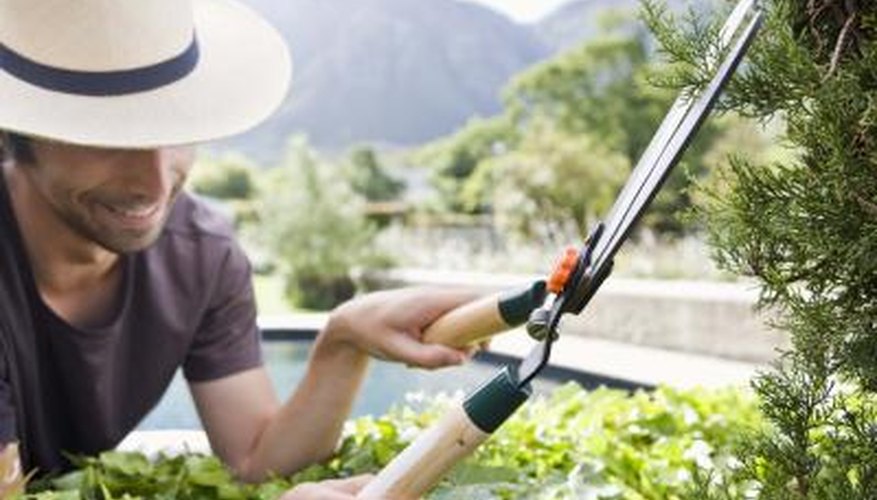Ninebark is an ideal shrub for difficult locations. It is highly adaptable, and the leaves come in a variety of colours including yellow, green, copper, red and maroon. In spring, pink or white clusters of flowers cover the shrubs. The faded flowers are replaced by small red seed pods that persist into winter on unpruned shrubs. Ninebark is ideal for using to create the bones of the garden, especially given the fact that it looks good paired with almost any type of plant.
Shrubs
Viburnum, golden elder, lilac, spiraea and dappled willow are good shrubs to plant in combination with ninebark. Select a variety of ninebark with darker coloured leaves to create contrast. Ninebark requires regular pruning to keep it in shape and so do some of these other shrubs, so leave enough room between these plants to allow for this to occur. Consider the flower colours and when they bloom as well. Select shrubs whose bloom times slightly overlap if possible.
- Viburnum, golden elder, lilac, spiraea and dappled willow are good shrubs to plant in combination with ninebark.
- Select a variety of ninebark with darker coloured leaves to create contrast.
Bulbs
Asiatic and Oriental lilies, tulips and daffodils look good planted in front of ninebark, especially the varieties with maroon foliage. The dark foliage causes the blooms of these plants to really stand out. Green foliage just doesn't have the same effect, and neither does yellow foliage. Bulbs are very easy to grow around shrubs and seem to appreciate the drier soil and slight shade that these plants produce as they grow. Select bulbs with flowers in contrasting colours to create a real eye-catching display or tone your garden down by planting flowers that harmonise with one another and the foliage of the ninebark.
- Asiatic and Oriental lilies, tulips and daffodils look good planted in front of ninebark, especially the varieties with maroon foliage.
Perennials
Hosta, Shasta daisy, ajuga, perennial geranium and sedum are good choices for perennials to grow as companion plants for ninebark shrubs. Hosta, perennial geranium, creeping sedum and ajuga is ideal for use as a groundcover around the base of the ninebark. Not only do these plants help block weeds, but they help conserve soil moisture and add colour to the area when the ninebark is not in bloom. Shasta daisies look fantastic grown in front of maroon-leaved varieties. Tall sedum is a good choice for adding late season colour, but do keep in mind that some varieties of ninebark have foliage that changes colour in the fall.
- Hosta, Shasta daisy, ajuga, perennial geranium and sedum are good choices for perennials to grow as companion plants for ninebark shrubs.
- Tall sedum is a good choice for adding late season colour, but do keep in mind that some varieties of ninebark have foliage that changes colour in the fall.
Vines
Clematis, chocolate vine and climbing roses are good choices for vines to grow in combination with ninebark. Chocolate vine and climbing roses are best grown behind this shrub since they need regular care. Clematis, on the other hand, is ideal for planting at the base of the ninebark shrub. The clematis vine prefers its roots to be shaded, although the rest of the plant prefers sun. Allow clematis vines to twine throughout the ninebark shrub where they will flower giving the shrub a very unique look.
- Clematis, chocolate vine and climbing roses are good choices for vines to grow in combination with ninebark.
